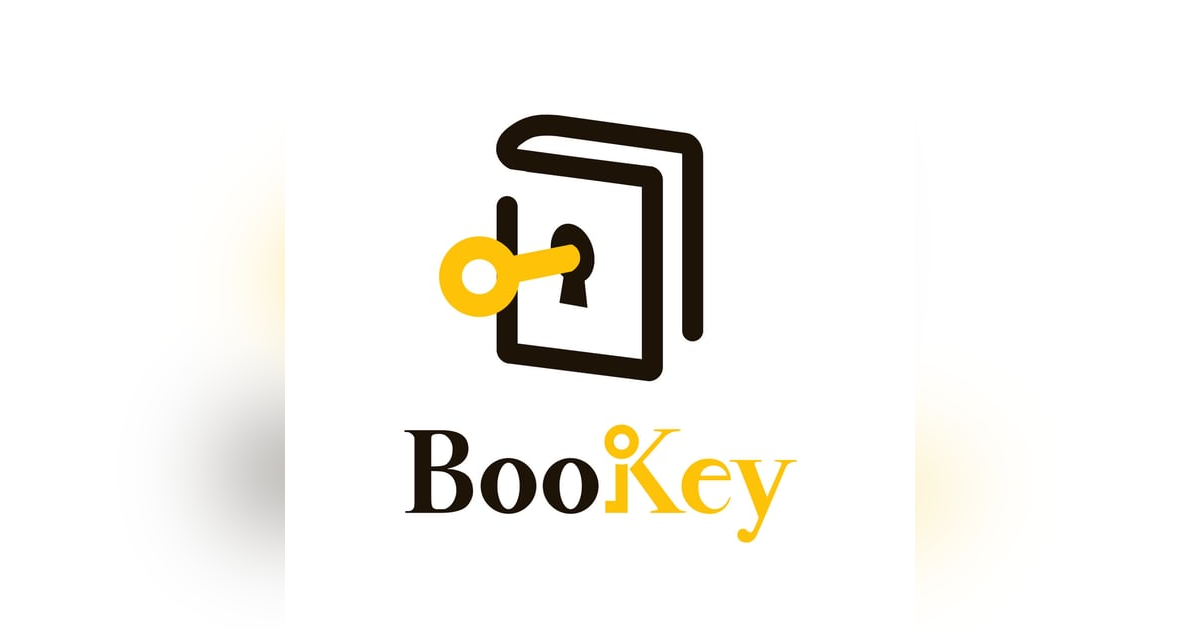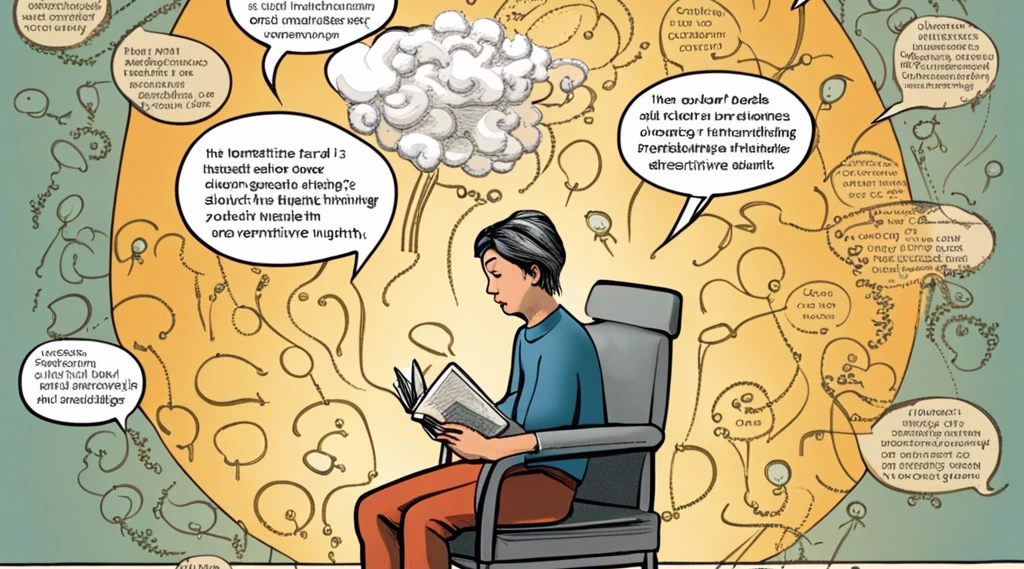
Sign up to get updates from us
By signing up, you agree to receive email from this podcast.
"Thinking, Fast and Slow" is a groundbreaking book by Daniel Kahneman that explores the two systems of thinking in our minds and how they shape our decision-making processes.

"Thinking, Fast and Slow" is a book written by Nobel laureate Daniel Kahneman. It explores the two systems of thinking that govern our decision-making processes: System 1 and System 2.
System 1 thinking refers to our intuitive and automatic mode of thinking. It operates quickly and effortlessly, allowing us to make rapid judgments and conclusions based on heuristics and mental shortcuts. This system relies on patterns, biases, and emotions to guide our everyday decisions.
On the other hand, System 2 thinking is our deliberate and analytical mode of thinking. It requires conscious effort and attention to detail. This system is responsible for logical reasoning, data analysis, problem-solving, and evaluating information critically.
Kahneman discusses various cognitive biases and heuristics that affect our thought processes and decision-making abilities. These biases can lead to errors, misconceptions, and irrational behavior. By understanding these biases, we can become more aware of our cognitive limitations and strive for more rational decision-making.
The book delves into topics like overconfidence, framing effects, anchoring bias, availability heuristic, loss aversion, and many others. It combines insights from psychology, neuroscience, and behavioral economics to provide a comprehensive understanding of how our minds work.
Overall, "Thinking, Fast and Slow" sheds light on the intricacies of human cognition, offering valuable insights into decision-making, judgment, and the biases that influence our thinking. It encourages readers to be mindful of their thought processes and make more informed choices in their personal and professional lives.
"Thinking, Fast and Slow" is worth reading for several reasons:
Overall, "Thinking, Fast and Slow" is worth reading due to its profound insights into human cognition, practical applications, engaging storytelling, and its ability to provoke thought and self-reflection. It equips readers with a deeper understanding of the complexities of human thinking, helping them become wiser decision-makers in both personal and professional realms.
In this article, we delve into Daniel Kahneman's groundbreaking book, "Thinking, Fast and Slow," which explores the two systems that drive our thinking processes. We uncover the intricate web of cognitive biases that affect our decision-making abilities and learn how to navigate these biases to make more rational choices. Join us on a journey through the fascinating realms of human thought as we unravel the secrets behind our fast and slow thinking systems.
The book "Thinking, Fast and Slow" was written by Daniel Kahneman, a renowned psychologist and Nobel laureate in economics. He released the book on October 25, 2011.
Daniel Kahneman is an Israeli-American psychologist and economist who has made significant contributions to the field of behavioral economics and decision-making. He was born on March 5, 1934, in Tel Aviv, Israel.
Kahneman's work focuses on understanding human judgment and decision-making processes, particularly exploring the biases and cognitive shortcuts that people use when making choices. Along with his colleague Amos Tversky, he developed the prospect theory, which challenged traditional economic theories by demonstrating that individuals do not always make rational decisions when faced with uncertainty.
One of Kahneman's most influential concepts is the distinction between two modes of thinking: System 1 and System 2. System 1 refers to fast, automatic, and intuitive thinking, while System 2 involves slower, deliberate, and effortful cognitive processes. His research shows that people often rely heavily on System 1 thinking, leading to errors and irrational decisions.
In recognition of his groundbreaking work, Daniel Kahneman received the Nobel Memorial Prize in Economic Sciences in 2002, becoming the first psychologist to win the award. His book, "Thinking, Fast and Slow," published in 2011, has become highly regarded as a comprehensive exploration of human decision-making and the biases that affect our judgments.
Overall, Daniel Kahneman's research has had a profound impact on multiple disciplines, including psychology, economics, and public policy. His work continues to shape our understanding of how humans make decisions and provides insights into improving decision-making processes in various areas of life.
Apart from "Thinking, Fast and Slow," Kahneman has not authored any other full-length books. However, he has made significant contributions to the field of psychology through his research papers, which are highly influential. Some of his notable papers include "Prospect Theory: An Analysis of Decision under Risk" and "Judgment under Uncertainty: Heuristics and Biases."
In terms of editions, the first edition of "Thinking, Fast and Slow" is widely regarded as the best edition. It received critical acclaim and became a bestseller, offering readers comprehensive insights into the two systems of thinking that shape our judgments and decision-making processes. Subsequent editions have been published, but the impact and popularity of the first edition remain unparalleled.
"Thinking, Fast and Slow" is a book written by Nobel laureate Daniel Kahneman. It explores the two systems of thinking we employ in decision-making: System 1 (fast, automatic, intuitive) and System 2 (slow, deliberate, analytical). The title reflects the contrast between these two cognitive systems.
In the book, Kahneman discusses how System 1 thinking often relies on our intuition and emotions, leading to biased judgments and snap decisions. On the other hand, System 2 thinking requires conscious effort and involves logical reasoning and critical thinking.
The meaning behind the title implies that our thinking processes can be categorized into these two systems, which operate differently and have distinct impacts on our judgment and decision-making abilities. By understanding these systems and their biases, we can become more aware of our cognitive limitations and make better choices in various aspects of life, such as finance, relationships, and personal well-being.
The theme of "Thinking, Fast and Slow" revolves around the two systems of thinking that humans use: System 1 (fast and intuitive) and System 2 (slow and deliberate). Authored by Daniel Kahneman, a Nobel laureate in economics, the book explores cognitive biases, heuristics, and decision-making processes.
One of the main themes is the distinction between these two thinking systems. System 1 operates automatically and quickly, relying on intuition and past experiences. It helps us make split-second judgments and react swiftly to everyday situations. On the other hand, System 2 is slower, analytical, and requires conscious effort. It helps us engage in complex problem-solving and critical thinking.
Kahneman delves into the flaws and limitations of both systems. He emphasizes that while our reliance on fast, intuitive thinking can lead to efficient decisions, it also introduces biases and errors. Understanding these biases can help individuals become more aware of their thought processes and make better-informed choices.
Another significant theme is the impact of cognitive biases on decision-making. The book highlights various biases like confirmation bias, availability heuristic, and framing effect. Kahneman explains how these biases affect our judgment, leading to irrational behavior and flawed decisions.
Furthermore, "Thinking, Fast and Slow" challenges the notion of human rationality. It suggests that our decision-making is often influenced by emotions, context, and cognitive shortcuts instead of logical reasoning. The book encourages readers to recognize these patterns and strive for more objective thinking.
Overall, the theme of "Thinking, Fast and Slow" revolves around understanding the complexities of human thinking and decision-making. By exploring the interplay between our two thinking systems and uncovering the biases that influence our choices, the book provides valuable insights for improving decision-making processes and achieving better outcomes.
If you enjoy reading, we have some recommendations for you. If you're interested in exploring different platforms of Thinking, Fast And Slow, we suggest taking a look at Bookey. They offer various formats of books and provide summaries as well, making it convenient to access information efficiently. For those who prefer purchasing physical copies, Goodreads is an excellent choice. With their vast collection, you can find a wide range of books, including "Thinking, Fast And Slow, such as SUMMARILY OF THINKING,FAST AND SLOW: Daniel Kahneman. Although we are unable to offer a PDF version of "Thinking, Fast And Slow" here, our aim is to assist you in finding accessible resources. These resources can help you delve into the principles and strategies presented in "Thinking, Fast And Slow" and apply them to your own entrepreneurial journey.
Here are a few notable quotes from the book "Thinking, Fast and Slow" by Daniel Kahneman:
- This quote highlights our tendency to overestimate the significance of current thoughts or concerns.
- It points out that our confidence in an idea or decision is often based on subjective feelings rather than logical analysis.
- This quote challenges the assumption that the world operates in a completely rational and predictable manner and emphasizes the role of cognitive biases in shaping our understanding.
- It highlights the fact that our minds can overlook certain information or fail to recognize our own limitations in perception and judgment.
- This quote emphasizes the power of repetition in shaping our beliefs, even if those beliefs are based on falsehoods or misconceptions.
- It suggests that intuition is often the result of our brains recognizing patterns or drawing upon past experiences to make quick judgments.
These quotes capture some of the key concepts discussed in "Thinking, Fast and Slow" related to cognitive biases, decision-making processes, and the limitations of human thinking.
If you enjoyed "Thinking, Fast and Slow" by Daniel Kahneman, you might be interested in exploring other books that delve into the workings of the mind, decision-making processes, and cognitive biases. Here are a few recommendations:
1."The Black Swan: The Impact of the Highly Improbable" by Nassim Nicholas Taleb: This book delves into the role of randomness and unpredictable events in shaping our lives, challenging our assumptions about predictability and decision-making.
These books provide fascinating perspectives on human behavior, cognition, and decision making, complementing the themes explored in "Thinking, Fast and Slow."